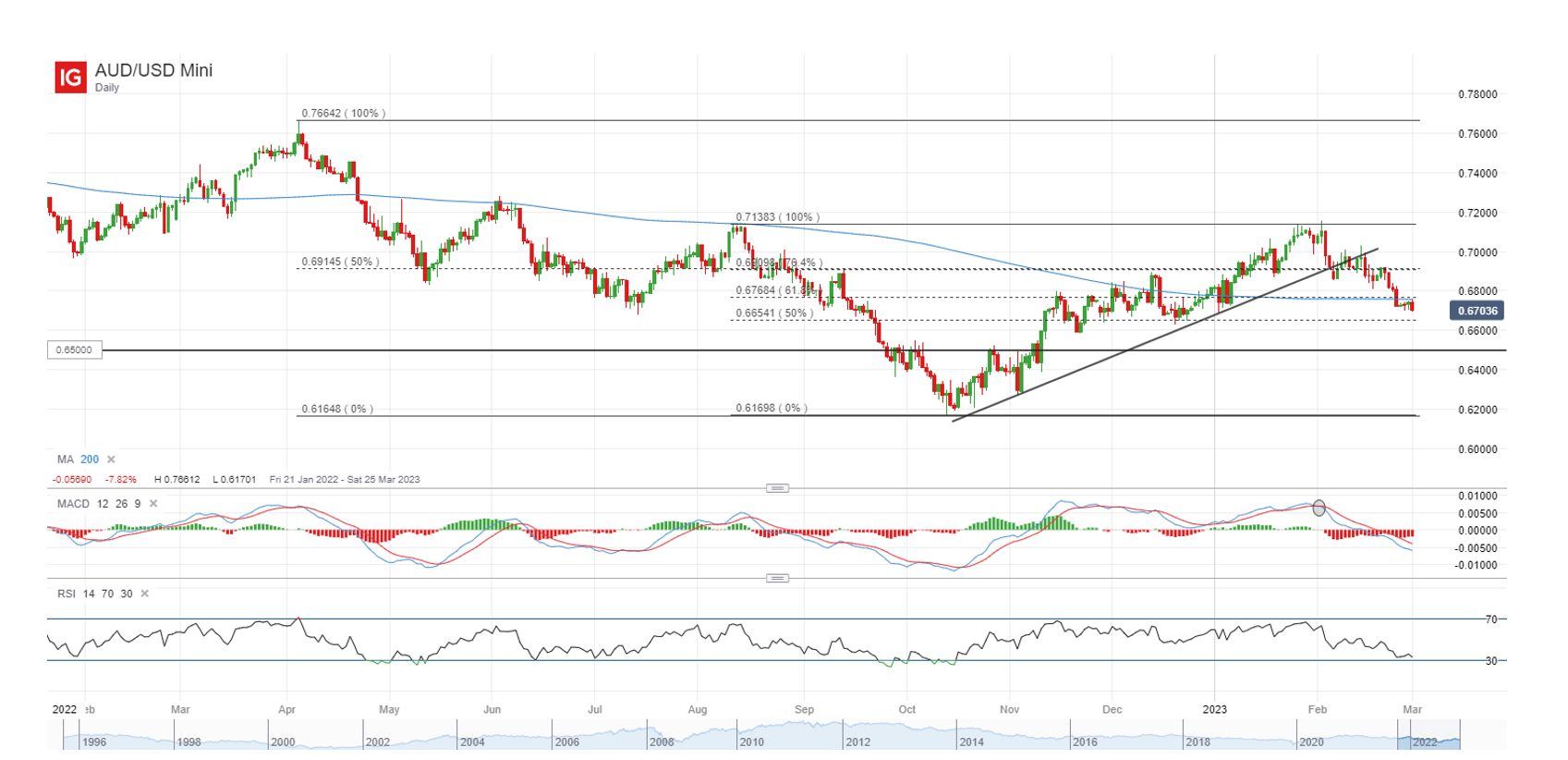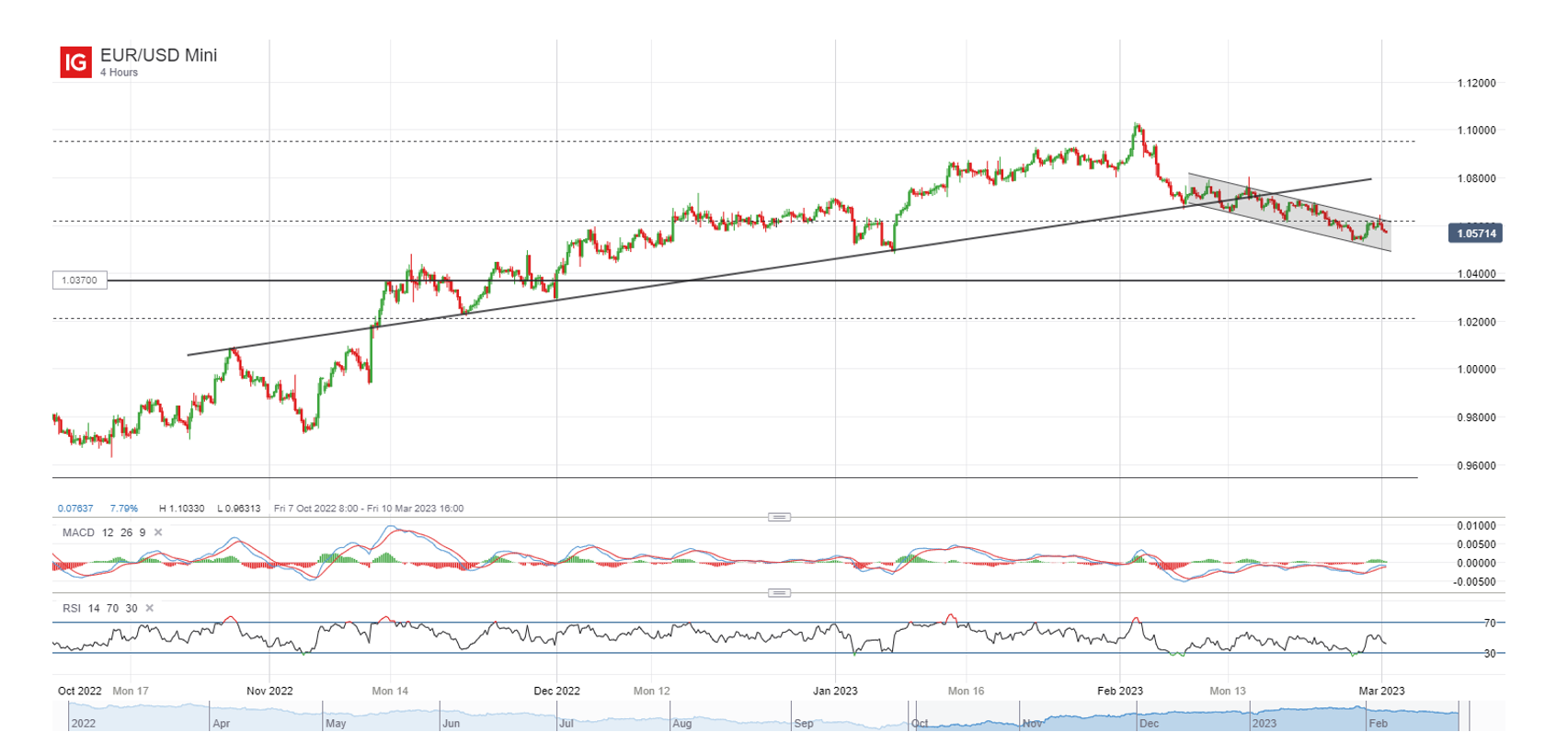Major US indices closed out February in the red: Gold, AUD/USD, EUR/USD
Major US indices closed out the month in the red, trading in line with the weak seasonality pattern for the month of February.
 Source: Bloomberg
Source: Bloomberg
Market Recap
Major US indices closed out the month in the red, trading in line with the weak seasonality pattern for the month of February. The first week of March could be tough as well, but seasonality suggests that the risk environment tends to strengthen thereafter through April. Much could still depend on whether the 200-day moving averages (MA) for US indices managed to hold ahead, as failing which could see further unwinding of longs from trend-following market participants by suggesting a shift in trend to the downside.
US Treasury yields continue to head higher as an obstacle for the risk environment, although rate expectations have been more well-anchored lately, likely from the relatively quiet economic calendar. The two-year yields are back to challenge its November 2022 highs. Weaker-than-expected US home prices and consumer confidence data failed to drive any dovish pivot hopes yesterday, as persistence in inflationary pressures remains the overriding market theme. This comes as higher-than-expected inflation out of France and Spain serves as a reminder that central banks will have to maintain their hawkish stance.
Strength in the US dollar has weighed on gold prices lately, but that does not seem to be the case overnight, with gold prices moving higher despite the US dollar resilience. Technical conditions hitting oversold levels could be a reason, as the Relative Strength Index (RSI) heads back into more neutral territory. A further upmove could also support the formation of a bullish crossover on moving average convergence/divergence (MACD). That said, the US$1,830 level may have to be overcome to provide greater conviction, along with a supportive move lower in the US dollar and Treasury yields. Near-term support for the yellow metal stands at the US$1,788 level, where a Fibonacci confluence zone stands.
 Source: IG charts
Source: IG charts
Asia Open
Asian stocks look set for a flat to negative open, with Nikkei -0.14%, ASX -0.18% and NZX -0.42% at the time of writing. South Korean markets are closed for holiday today. There has been a big move lower in the AUD/USD this morning, with the pair reacting to the significant downside surprise in Australia’s monthly consumer price index (CPI) indicator (7.4% versus 8% forecast). That provided a promising start that the worst could be over for Australia’s inflationary pressures and supports some leeway for the Reserve Bank of Australia (RBA) to go easier in its tightening stance over the coming months.
On another note, Australia’s Q4 gross domestic product (GDP) growth underperformed from the previous quarter (0.5% versus 0.8% forecast), reflecting an economy under pressure and at risk of further slowdown ahead.
For the AUD/USD, a breakdown of a support confluence at the 0.673 level, along with its 200-day MA, seems to provide an overall bearish bias. This may leave the 0.665 level on watch next, where the level has supported the pair on at least three occasions back in November-December last year. Failure for the level to hold could seem to pave the way towards the 0.650 level next.
 Source: IG charts
Source: IG charts
On the watchlist: Upside surprises in inflation supports EUR/USD but much remains
A turn higher in inflation readings out of France and Spain for the second consecutive month suggests that underlying pricing pressures remain persistent in the region and not providing any slack for the European Central Bank (ECB) in terms of policy tightening. Particularly for France, February’s uptick to 6.2% year-on-year challenges its previous inflation high in November last year and there is the risk that pricing pressures have not peaked yet. While hotter-than-expected inflation may be supportive of the euro, upside for the EUR/USD was kept in check by a late-night surge in the US dollar.
After breaking below an upward trendline in mid-February, the EUR/USD has been trading on near-term lower highs and lower lows, fitted nicely into a descending channel pattern. Recent retest of the 1.062 level at the upper channel resistance was met with the formation of a bearish pin bar, suggesting the presence of sellers in defending the current downward trend. Further retracement could leave the 1.050 level on watch, where previous dip-buying was spotted on the weekly timeframe. Failure for the level to hold could pave the way towards the 1.036 level next.
 Source: IG charts
Source: IG charts
Tuesday: DJIA -0.71%; S&P 500 -0.30%; Nasdaq -0.10%, DAX -0.11%, FTSE -0.74%


.jpg.27c55ea07d5a17683fbdbda06b8fcace.jpg)
.png.02f0e5e742ffe3a81b011c17df3009ee.png)

0 Comments
Recommended Comments
There are no comments to display.
Create an account or sign in to comment
You need to be a member in order to leave a comment
Create an account
Sign up for a new account in our community. It's easy!
Register a new accountSign in
Already have an account? Sign in here.
Sign In Now